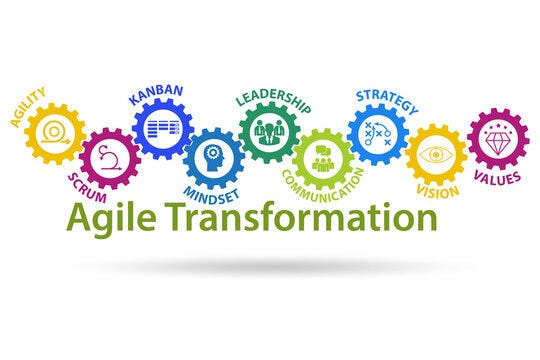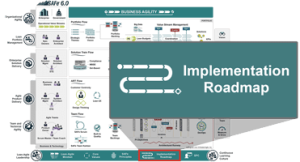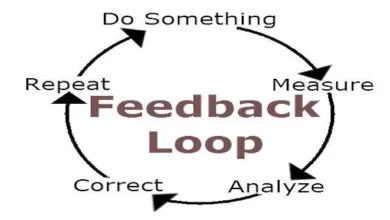How to Build an Agile Transformation Roadmap: 3 Effective Way

An agile transformation is not a one-time event but a continuous journey towards achieving agility. To help guide your organization through this transformation, we’ll explore a roadmap for the Agile transformation program, the importance of a product roadmap in Agile, and the key elements of an Agile transformation strategy roadmap.
Agile transformation is a fundamental shift in how organizations operate and deliver value. It involves adopting Agile principles and practices to enhance flexibility, innovation, and responsiveness to customer needs. To embark on this journey successfully, an Agile transformation roadmap is essential.
What is Agile Transformation?
Agile transformation is a profound shift in an organization’s mindset, culture, and processes. It involves adopting Agile methodologies, such as Scrum or Kanban, to improve collaboration, adaptability, and the ability to deliver value rapidly.
What is the Agile Transformation Roadmap?
How to Build an Agile Transformation Roadmap

An Agile transformation begins by understanding the underlying issues and clearly defining the purpose behind the transformation. It is important to identify the real problems the organization is facing instead of adopting Agile just for the sake of following trends. For example, if the goal is to increase speed and time-to-market, Agile may seem like a solution. However, it is crucial to adopt the Agile mindset and understand the principles behind it, adapting them to fit the organization’s specific context.
Creating a culture that promotes knowledge sharing, autonomy, and a people-centric approach is a critical step. While it may not be a quick solution to improving efficiency, it establishes a foundation for long-term success.
The Agile transformation should be seen as an evolutionary journey rather than a sudden implementation. Starting with the current processes and experimenting with different approaches allows for gradual progress and continuous improvement. Understanding the current work process and visualizing how value is created step by step helps identify bottlenecks and gain a common understanding among team members. This also helps address any resistance to change and ensures the success of the Agile transformation.
Building an agile transformation roadmap requires careful planning and execution. Here’s a step-by-step guide to help you get started:
Step 1: Assess Your Current State
Before crafting a roadmap, assess your organization’s current Agile maturity. Understand your strengths, weaknesses, and areas that require improvement. Engage with key stakeholders, employees, and Agile coaches to gather insights.
Step 2: Define Your Agile Vision
Clearly define your vision for Agile transformation. What are the specific outcomes you want to achieve? Your vision should align with your organization’s strategic goals and emphasize the importance of Agile principles.
Step 3: Set Measurable Goals
Establish SMART (specific, measurable, achievable, relevant, and time-bound) goals. These goals should be quantifiable and aligned with your Agile vision. For example, increasing product release frequency or reducing lead time.
Step 4: Identify Key Initiatives
Determine the key initiatives that will drive your Agile transformation. These initiatives could include Agile training, process reengineering, and the introduction of Agile tools and methodologies.
Step 5: Create a Timeline
Develop a timeline for your Agile transformation roadmap. Consider the duration of each initiative, dependencies, and milestones. Ensure that the timeline aligns with your organization’s capacity for change.
Step 6: Allocate Resources
Allocate the necessary resources, including budget, personnel, and technology, to support your transformation initiatives. Adequate resourcing is crucial for successful execution.
Step 7: Develop Agile Teams
Assemble Agile teams and appoint Agile coaches to guide and mentor them. Agile teams should be cross-functional, self-organizing, and empowered to make decisions.
Step 8: Provide Training and Support
Invest in Agile training and development programs for employees at all levels. Ensure that everyone understands Agile principles and practices. Provide ongoing support and coaching to Agile teams.
Step 9: Implement Agile Practices
Roll out Agile practices such as daily stand-up meetings, sprint planning, and retrospectives. Encourage teams to embrace Agile ceremonies and adapt their processes iteratively.
Step 10: Measure Progress and Adapt
Regularly measure progress against your defined goals and KPIs. Use feedback to adapt and refine your Agile transformation roadmap. Continuous improvement is a core principle of Agile.
Sample Agile Transformation Roadmap:

Creating an Agile Transformation Roadmap involves planning and implementing the steps necessary to transition an organization from traditional methods to an Agile framework. Here’s a sample Agile Transformation Roadmap that outlines the key stages and activities:
Assessment and Planning:
-
- Evaluate the current state of the organization, including culture, processes, and practices.
- Identify the goals and objectives of the Agile transformation.
- Define the scope and timeline of the transformation.
Executive Sponsorship and Alignment:
-
- Secure executive sponsorship and support for the Agile transformation.
- Communicate the vision and benefits of Agile to stakeholders at all levels.
- Align the organization’s strategic objectives with Agile principles.
Training and Education:
-
- Provide Agile training sessions for teams, managers, and leaders.
- Educate stakeholders about Agile principles, values, and practices.
- Foster a shared understanding of Agile concepts and terminology.
Pilot Projects and Agile Teams:
-
- Select a pilot project or pilot teams to experiment with Agile practices.
- Establish cross-functional, self-organizing Agile teams.
- Implement Agile ceremonies, such as daily stand-ups, sprint planning, and retrospectives.
Continuous Improvement and Feedback:
-
- Encourage a culture of continuous improvement and learning.
- Gather feedback from teams and stakeholders to identify areas for improvement.
- Adapt Agile practices based on feedback and lessons learned.
Scaling Agile:
-
- Expand Agile practices beyond the pilot teams to other departments or business units.
- Establish Agile governance structures and guidelines for scaling.
- Support the formation of Agile Communities of Practice to facilitate knowledge sharing.
Agile Tools and Infrastructure:
-
- Evaluate and implement Agile project management tools and collaboration platforms.
- Ensure the availability of the necessary infrastructure to support Agile practices.
- Foster a digital workspace that promotes transparency and collaboration.
Agile Leadership and Culture:
-
- Develop Agile leadership capabilities at all levels of the organization.
- Encourage servant leadership and empower teams to make decisions.
- Foster a culture of trust, collaboration, and continuous learning.
Continuous Monitoring and Adaptation:
-
- Monitor the progress of the Agile transformation and measure key performance indicators.
- Conduct regular retrospectives and adjust the transformation roadmap as needed.
- Celebrate successes and recognize achievements along the Agile journey.
Agile Transformation Roadmap McKinsey

McKinsey & Company is known for its expertise in business transformation, including Agile transformation. While they offer valuable insights, it’s essential to tailor their methodologies and frameworks to your specific organization’s context and needs.
Navigate Your Agile Transformation Journey
Building an Agile transformation roadmap is a critical step towards achieving organizational agility and delivering value to customers efficiently. By following these steps and using the right resources, templates, and methodologies, your organization can navigate the Agile transformation journey successfully. Remember that Agile is not just a process; it’s a mindset and a cultural shift that can lead to long-term success in today’s dynamic business landscape.
Agile roadmap templates
Here are a few template options for Agile transformation roadmap designs that you can use as a starting point:
- Timeline-based Agile Roadmap:
- This template presents the Agile transformation journey in timeline format, highlighting key milestones, activities, and phases of the transformation process. It provides a visual representation of the roadmap’s timeline, allowing stakeholders to track progress over time.
- Kanban Board-inspired Agile Roadmap:
- This template takes inspiration from the Kanban method and organizes the Agile transformation roadmap into columns representing different stages or phases. Each column can represent a specific objective, such as assessment, training, pilot projects, scaling, etc. Tasks or activities can be added as cards within each column, allowing for visual progress tracking.
- Sprint-based Agile Roadmap:
- This template divides the Agile transformation roadmap into sprints, mirroring the iterative nature of Agile development. Each sprint represents a specific timeframe (e.g., two weeks) and includes a set of goals, tasks, and deliverables. This template provides a clear overview of what needs to be accomplished within each sprint.




